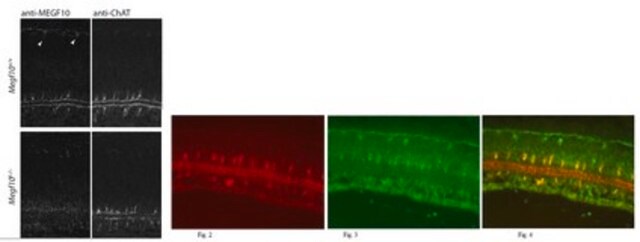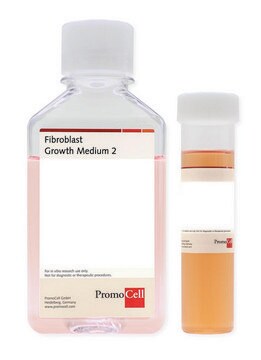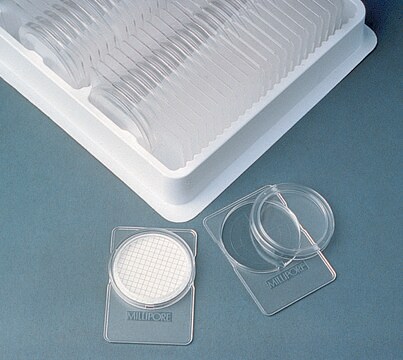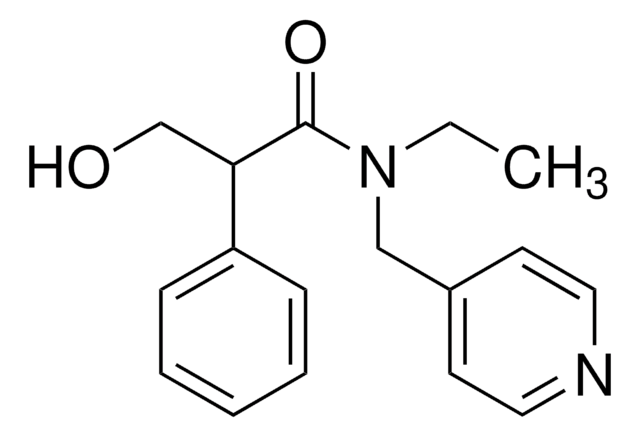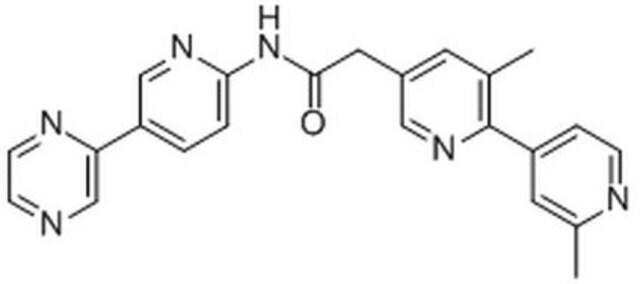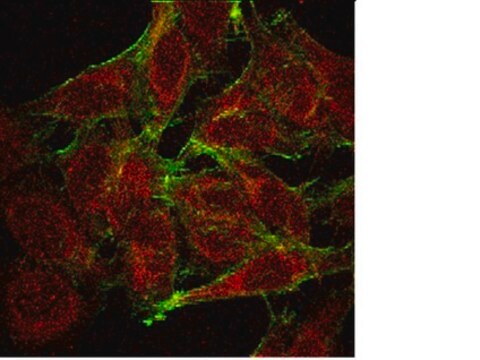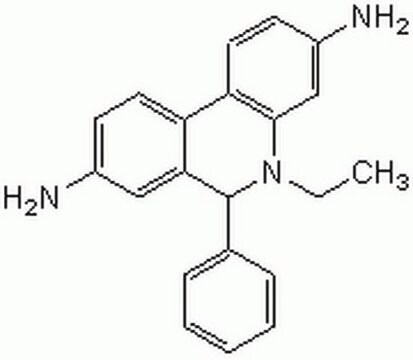추천 제품
생물학적 소스
rabbit
Quality Level
항체 형태
serum
항체 생산 유형
primary antibodies
클론
polyclonal
종 반응성
mouse
제조업체/상표
Chemicon®
기술
immunocytochemistry: suitable
immunohistochemistry: suitable
western blot: suitable
NCBI 수납 번호
UniProt 수납 번호
배송 상태
dry ice
타겟 번역 후 변형
unmodified
유전자 정보
mouse ... Pkd2(18764)
특이성
Polycystin-L
면역원
Synthetic peptide from the N-terminal of human Polycystin-L1.
애플리케이션
Research Category
Metabolism
Metabolism
Research Sub Category
Renal Physiology
Renal Physiology
This Anti-Polycystin-L Antibody is validated for use in WB, IC, IH for the detection of Polycystin-L.
Western blot: 1:1,000 using ECL. The antibody reacts with the 90 kDa Polycystin1-L1 protein. Suggested blocking buffer is 10% normal goat serum (or same host as your secondary antibody), 1% BSA in 0.1M PBS with 0.05% Tween 20. Suggested dilution buffer is 1% normal goat serum (or same host as your secondary antibody), 1% BSA in 0.1M PBS with 0.05% Tween 20. Preferred gel percentage is 4-12% gradient gel.
Immunocytochemistry: 1:1,000
Immunohistochemistry: 1:1,000 overnight at 2-8°C using a fluorescently labeled secondary antibody. Suggested fixative is 4% paraformaldehyde in 0.1M PBS (one hour). Suggested permeablization method is 0.05% Triton X-100 in dilution buffer. Suggested blocking buffer is 10% normal goat serum (or same host as your secondary antibody) and 1% BSA in 0.1M PBS. Suggested dilution buffer is 1% normal goat serum (or same host as your secondary antibody) and 1% BSA in 0.1M PBS.
Optimal working dilutions must be determined by the end user.
Immunocytochemistry: 1:1,000
Immunohistochemistry: 1:1,000 overnight at 2-8°C using a fluorescently labeled secondary antibody. Suggested fixative is 4% paraformaldehyde in 0.1M PBS (one hour). Suggested permeablization method is 0.05% Triton X-100 in dilution buffer. Suggested blocking buffer is 10% normal goat serum (or same host as your secondary antibody) and 1% BSA in 0.1M PBS. Suggested dilution buffer is 1% normal goat serum (or same host as your secondary antibody) and 1% BSA in 0.1M PBS.
Optimal working dilutions must be determined by the end user.
분석 메모
Control
POSITIVE CONTROL: adult mouse retina
NEGATIVE CONTROL: adult mouse lung
POSITIVE CONTROL: adult mouse retina
NEGATIVE CONTROL: adult mouse lung
법적 정보
CHEMICON is a registered trademark of Merck KGaA, Darmstadt, Germany
면책조항
Unless otherwise stated in our catalog or other company documentation accompanying the product(s), our products are intended for research use only and are not to be used for any other purpose, which includes but is not limited to, unauthorized commercial uses, in vitro diagnostic uses, ex vivo or in vivo therapeutic uses or any type of consumption or application to humans or animals.
적합한 제품을 찾을 수 없으신가요?
당사의 제품 선택기 도구.을(를) 시도해 보세요.
Storage Class Code
10 - Combustible liquids
WGK
WGK 1
Flash Point (°F)
Not applicable
Flash Point (°C)
Not applicable
시험 성적서(COA)
제품의 로트/배치 번호를 입력하여 시험 성적서(COA)을 검색하십시오. 로트 및 배치 번호는 제품 라벨에 있는 ‘로트’ 또는 ‘배치’라는 용어 뒤에서 찾을 수 있습니다.
Qiang Su et al.
Nature communications, 12(1), 4871-4871 (2021-08-13)
The heteromeric complex between PKD1L3, a member of the polycystic kidney disease (PKD) protein family, and PKD2L1, also known as TRPP2 or TRPP3, has been a prototype for mechanistic characterization of heterotetrametric TRP-like channels. Here we show that a truncated
Polycystin-2 expression and function in adult mouse lacrimal acinar cells.
Kaja, S; Hilgenberg, JD; Rybalchenko, V; Medina-Ortiz, WE; Gregg, EV; Koulen, P
Investigative Ophthalmology & Visual Science null
Elham Jalalvand et al.
eLife, 11 (2022-02-02)
Cerebrospinal fluid-contacting (CSF-c) neurons line the central canal of the spinal cord and a subtype of CSF-c neurons expressing somatostatin, forms a homeostatic pH regulating system. Despite their importance, their intricate spatial organization is poorly understood. The function of another
Adeline Orts-Del'Immagine et al.
PloS one, 9(2), e87748-e87748 (2014-02-08)
The mammalian spinal cord and medulla oblongata harbor unique neurons that remain in contact with the cerebrospinal fluid (CSF-cNs). These neurons were shown recently to express a polycystin member of the TRP channels family (PKD2L1) that potentially acts as a
Nina Jurčić et al.
The European journal of neuroscience, 54(3), 4781-4803 (2021-06-08)
Neurons in contact with the cerebrospinal fluid (CSF) are found around the medullo-spinal central canal (CC) in adult mice. These neurons (CSF-cNs), located within or below the ependymal cell layer, known as the stem cell niche, present a characteristic morphology
자사의 과학자팀은 생명 과학, 재료 과학, 화학 합성, 크로마토그래피, 분석 및 기타 많은 영역을 포함한 모든 과학 분야에 경험이 있습니다..
고객지원팀으로 연락바랍니다.